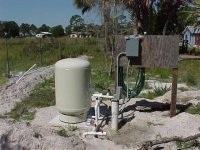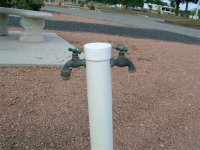Thanks for all the great responses. What I have learned is that I should upsize to 2". Some like the black poly, but have no experience with it and I just don't see it used around here much. I do see bell ended PVC alot, although I was thinking of using the straight ended pipe with unions. The bell ends should be better - although they might be more expensive.
I haven't worked with the black poly, and so I would probably be leaning to the PVC.
Looks like I probably should not run 115V wire in the same trench with the water line. Where do you get the "conductor" that you put in the hole so you can find it later? Is this just a wire basically?
I stepped it off this morning and if I split and take one to the future gazebo it would be about 450'. I'll check the prices on ride vs walk beside and make a decision based on that, assuming the walk besides are not unreasonably slow.
My problem is that I get stuff mostly at the box stores, and it seems I need to go to a plumbing or irrigation supply outfit to get the pipe and also the large frost-free hydrants, and the fittings.
I might also check into an irrigation company doing the job. My impression from reading other people's experience is that running water lines is very expensive when done by folks in that business. Maybe they will surprise me.
Is my regular tractor with FEL OK for backfilling the trenches, or is the trencher itself a better tool? This would help in my planning, whether or not to take it back after digging the trenches and before laying the pipe.
My well pump is rated 20 GPM, but my well driller says it will probably go 25 at the 399' depth it is set. I have run it full out for hours at a time, but this was straight out of the wellhead, never through the pressure tank. This might be a complication because if I run it too slow the pump will cycle, but if I run out too much, the pressure might drop to the point of pumping the pressure tank dry. I have tried this for maybe an hour, adjusting the valve to keep the pressure steady, but invariably it either creeps up and cuts off the pump (then comes back on within 30 seconds because of the volume of water being run out), or it bleeds down and eventually runs all the water out of the tank. This needs to be thought through some how.
I like the idea of some sort of float valve on the pond, but I need to be sure I can regulate it so the pump will run the hole time.
Eddie, I couldn't quite grasp your explanation of the hydrant with the sleeve. Do you have a picture?


